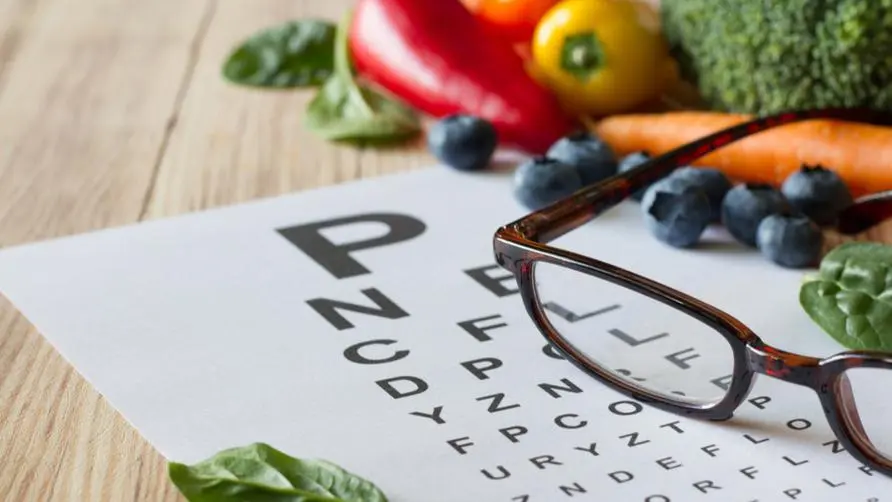The "last mile" where light hurts your eyes! Understand the causes, symptoms and dietary prevention of macular degeneration

What is macular degeneration? The “last mile” where light hurts your eyes?
Due to the hole in the earth’s ozone layer in recent years, the global greenhouse effect and surface temperature have increased. The intensity of sunlight in modern times is no longer the same as it was ten or twenty years ago. The entire body of the human body is basically opaque to light. Only the eyes allow light to enter, allowing the human body to distinguish the distance of space and the color of objects. The path of light from the eye to the final image may cause a series of eye problems of varying degrees.
First of all, light entering the cornea may cause “phototoxic keratitis”, and entering the lens may cause lens disease, which may cause “cataracts”. Then it further enters the vitreous body, causing vitreous lesions in the long run, which is commonly known as “floaters”. Finally, the light attacks the macula on the retina, causing “macular degeneration”.
If it is transient phototoxic keratitis, temporary symptoms such as photophobia, tearing, burning sensation, inability to open the eyes, and vision loss will occur. This is superficial inflammation caused by the breakage and peeling of corneal epithelial cells, which usually occurs. It will heal on its own within 24-48 hours. Artificial tears can be used to help soothe the cornea or ointment can be used to prevent corneal infection.
When the light enters the lens closer, there is a gel-like substance behind the lens, which allows the light to penetrate and achieve the effects of refraction and adjustment of vision. When the lens is damaged by light, it will gradually cause lens opacity, which is commonly known as cataracts; light enters from the cornea to the lens and then to the vitreous body, because the vitreous body is a gelatinous substance like agarwood. As the disease progresses with age or eye use, “floaters” will appear after the gelatinous substance liquefies.
The last section of the path of light penetrating the eye is when the light reaches the macula. If the body’s antioxidant capacity is insufficient, or the daily diet is abnormal and the intake of fruits and vegetables is insufficient, the light will cause permanent damage to the macula, leading to macular degeneration. Discovery of lesions. At present, macular degeneration on the retina is irreversible. Surgery and drugs are mainly used to delay the deterioration and save some vision. Severe macular lesions may lead to blindness to a considerable extent and should not be taken carelessly.
Are macular degeneration classified as dry or wet? Cause different effects on vision?
The eye is like a camera. Light is projected from the cornea to the crystalline lens onto the retina. The function of the retina is like the photosensitive element of a camera, with many photosensitive cells arranged in it. Under the retina is the choroid layer rich in blood flow. The outer layer is the scleral layer commonly known as the white of the eye. There is a darker area in the center. This area contains some pigment cells and is the location with the highest lutein and zeaxanthin content. , so it is named “macular part”.
Age-related macular degeneration (ARMD) commonly occurs in people over the age of 50 and is the main cause of blindness in the elderly. Age-related macular degeneration usually has few symptoms in the early stages, but as it gradually worsens, patients will experience central vision loss and develop new blood vessels that cause macular damage. It is usually divided into two categories based on whether bleeding or water accumulation occurs: dry macular degeneration and wet macular degeneration.
Patients with dry macular degeneration account for 85-90% of all macular degeneration. It is a kind of atrophy and degeneration of retinal pigment epithelial cells. Vision usually changes slowly and has a relatively small impact on vision. The second type is wet macular degeneration, because new blood vessels grow in the choroid, leading to retinal hemorrhage, macular edema, vitreous hemorrhage, retinal scarring, etc. It needs active treatment, otherwise it will greatly affect vision. Generally, In other words, wet lesions pose a greater threat to vision than dry lesions.
What are the symptoms of macular degeneration? What treatments are usually available?
The main symptoms of macular degeneration include: blurred vision, distorted vision, and dark shadows in the central area of vision. It may occur in one eye or both eyes. Generally, it can be confirmed by fundus photography, ophthalmoscopy, and visual acuity measurement.
General examination methods of the macula include non-invasive optical synchronized fundus tomography OCT, fundus fluorescein angiography (FAG), and intraocular green angiography (ICG). It can be seen whether there are new blood vessels and whether there is water accumulation in the macula. , structural variations, etc., and then decide how to treat it.
As for the treatment of macular degeneration, there are local retinal laser photocoagulation treatments, intraocular injection of neovascularization inhibitory drugs, photodynamic therapy, etc. Ask an ophthalmologist to evaluate the most appropriate treatment
How to prevent macular degeneration? Is it necessary to persevere in supplementing lutein?
You can usually strengthen your body’s antioxidant capacity by consuming more fruits and vegetables. Lutein is one of more than 600 natural carotenoids discovered so far. It is a photosynthetic pigment and must be taken in from your daily diet. In addition, the main functions of lutein include filtering blue light to reduce damage to photoreceptor cells in the eyes, inhibiting free radicals, etc. It is equivalent to natural sunglasses, helping you block the harm of sunlight. The current research conclusion of lutein is mainly to improve the delay of age-related macular degeneration.
If you want to supplement lutein from food, it is recommended to consume more kale, agarwood, chrysanthemum, spinach, leek, cabbage, etc. You can get about 3.9-5.25 mg of lutein per 100 grams. However, for chewing People with poor ability and poor gastrointestinal absorption ability can consider buying health supplements directly, which will appear to be relatively efficient. At present, health foods for macular degeneration are recommended to be based on lutein, astaxanthin and DHA, and you should consult a professional pharmacist before supplementing.
In addition, you should also pay attention to the timing of supplementing lutein. It is usually taken after meals. One pill per day can achieve the recommended intake. However, it is recommended to take lutein for a long time. Although the blood concentration will increase after intestinal absorption, it will take about 2-4 months to reach the macula of the eye and be effectively supplemented. Therefore, lutein supplementation needs to be sustained. Only then can it have real health care effects.
Further reading:





